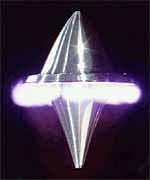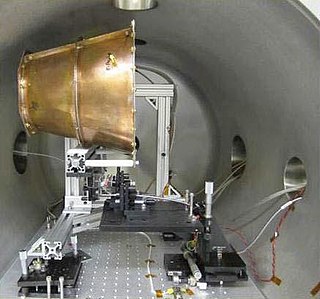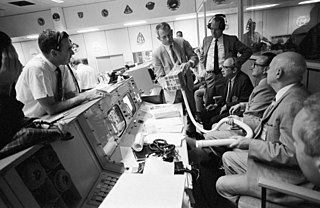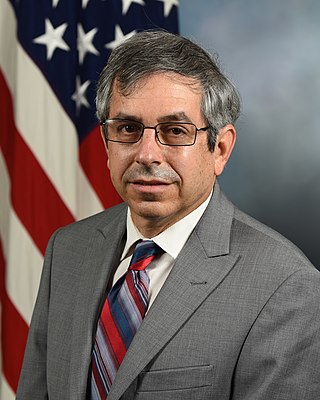Big Dumb Booster (BDB) is a general class of launch vehicle based on the premise that it is cheaper to operate large rockets of simple design than it is to operate smaller, more complex ones regardless of the lower payload efficiency. As referred to by the Office of Technology Assessment:
The term Big Dumb Booster has been applied to a wide variety of concepts for low-cost launch vehicles, especially those that would use "low technology" approaches to engines and propellant tanks in the booster stage. As used here, it refers to the criterion of designing launch systems for minimum cost by using simplified subsystems where appropriate.

The Lightcraft is a space- or air-vehicle driven by beam-powered propulsion, the energy source powering the craft being external. It was conceptualized by aerospace engineering professor Leik Myrabo at Rensselaer Polytechnic Institute in 1976, who developed the concept further with working prototypes, funded in the 1980s by the Strategic Defense Initiative organization, and the decade after by the Advanced Concept Division of the US Air Force AFRL, NASA's MFSC and the Lawrence Livermore National Laboratory.

The American Institute of Aeronautics and Astronautics (AIAA) is a professional society for the field of aerospace engineering. The AIAA is the U.S. representative on the International Astronautical Federation and the International Council of the Aeronautical Sciences. In 2015, it had more than 30,000 members among aerospace professionals worldwide.
Burkhard Heim was a German theoretical physicist known for the creation of a unified field theory called Heim theory. He was particularly interested in the application of his theory to the development of hyperspace travel.

Hydroxylammonium nitrate or hydroxylamine nitrate (HAN) is an inorganic compound with the chemical formula [NH3OH]+[NO3]−. It is a salt derived from hydroxylamine and nitric acid. In its pure form, it is a colourless hygroscopic solid. It has potential to be used as a rocket propellant either as a solution in monopropellants or bipropellants. Hydroxylammonium nitrate (HAN)-based propellants are a viable and effective solution for future green propellant-based missions, as it offers 50% higher performance for a given propellant tank compared to commercially used hydrazine.

The EmDrive is a concept for a thruster for spacecraft, first written about in 2001. It is purported to generate thrust by reflecting microwaves inside the device, in a way that would violate the law of conservation of momentum and other laws of physics. The concept has at times been referred to as a resonant cavity thruster.
Len Cormier worked for many years in the U.S. aerospace industry, in government, large industry, and as a private entrepreneur. He developed many creative proposals for reusable launch vehicles, and was present at several key events of the early Space Age.
The RL60 was a planned liquid-fuel cryogenic rocket engine designed in the United States by Pratt & Whitney, burning cryogenic liquid hydrogen and liquid oxygen propellants. The engine runs on an expander cycle, running the turbopumps with waste heat absorbed from the main combustion process. This high-efficiency, waste heat based combustion cycle combined with the high-performance liquid hydrogen fuel enables the engine to reach a very high specific impulse of up to 465 seconds in a vacuum. The engine was planned to be a more capable successor to the Aerojet Rocketdyne RL10, providing improved performance and efficiency while maintaining the installation envelope of the RL10.

Aerospace engineering is the primary field of engineering concerned with the development of aircraft and spacecraft. It has two major and overlapping branches: aeronautical engineering and astronautical engineering. Avionics engineering is similar, but deals with the electronics side of aerospace engineering.
Aluminum-Ice Rocket Propellant, or ALICE, is a rocket propellant that consists of nano-aluminum powder and water. After mixing, the material is frozen to keep it stable.
The Swiss Propulsion Laboratory (SPL) is a rocket laboratory that runs integrated programs focusing on research and development of space-technology and space tourism. It is located in Langenthal, Switzerland and was founded in 1998. The company develops, builds and runs rocket systems that transport small payloads into low Earth orbit (LEO).

Ulfila Mark J. Lewis is a senior American aerospace and defense executive with special expertise in hypersonics. He is currently the Executive Director of the National Defense Industrial Association's Emerging Technologies Institute, following his role in the second half of 2020 as the acting US Deputy Under Secretary of Defense for Research and Engineering, and before that the Director of Defense Research and Engineering for Modernization. He was the Chief Scientist of the U.S. Air Force, Washington, D.C. from 2004 to 2008 and was the longest-serving Chief Scientist in Air Force history. He served as chief scientific adviser to the Chief of Staff and Secretary of the Air Force, and provided assessments on a wide range of scientific and technical issues affecting the Air Force mission. In this role he identified and analyzed technical issues and brought them to attention of Air Force leaders, and interacted with other Air Staff principals, operational commanders, combatant commands, acquisition, and science & technology communities to address cross-organizational technical issues and solutions. His primary areas of focus included energy, sustainment, long-range strike technologies, advanced propulsion systems, and workforce development.
Alexander Alexandrovich Bolonkin was a Russian-American scientist and academic who worked in the Soviet aviation, space and rocket industries and lectured in Moscow universities, before being arrested in 1972 by the KGB as a dissident. He served terms of imprisonment and exile for 15 years until 1987, when he emigrated to the US as a political refugee.

The R-4D is a small hypergolic rocket engine, originally designed by Marquardt Corporation for use as a reaction control system thruster on vehicles of the Apollo crewed Moon landing program. Aerojet Rocketdyne manufactures and markets modern versions of the R-4D.

Michael M. Watkins is an American engineer, scientist, and a Professor of Aerospace and Geophysics at the California Institute of Technology (Caltech). He previously served as the 9th director of NASA's Jet Propulsion Laboratory in Pasadena, California, and as a vice president of Caltech, which staffs and manages JPL for NASA. His directorial position was effective from July 1, 2016 to August 20, 2021.

Joseph Majdalani is an Lebanese-American professor of Mechanical and Aerospace Engineering. He began his career at Marquette University, before serving as both the Jack D. Whitfield Professor of High Speed Flows and Arnold Chair of Excellence at the University of Tennessee Space Institute. He then served as the Auburn Alumni Engineering Council Endowed Professor and Chair, and is currently the Hugh and Loeda Francis Chair of Excellence in Aerospace Engineering at Auburn University.

Ashwani K. Gupta is a British-American engineer and educator with research focus on combustion, fuels, fuel reforming, advanced diagnostics, High Temperature Air Combustion, and high-intensity distributed combustion, green combustion turbine, micro-combustion, and air pollution. He is an Distinguished University Professor at the University of Maryland. Gupta is also Professor of Mechanical Engineering at the University of Maryland and Director of Combustion Laboratory. He is also an Affiliate Professor at Institute of Physical Science and Technology, University of Maryland which is part of the University of Maryland College of Computer, Mathematical and Natural Sciences.

Mike Gruntman is a Russian-American physicist, space engineer, and author. He is professor of astronautics and aerospace engineering at the Viterbi School of Engineering, University of Southern California (USC).

David Y. Oh is an American spacecraft systems engineer and expert in electric propulsion. Dr. Oh currently works at the Jet Propulsion Laboratory (JPL) as the NASA Psyche mission chief engineer. Prior to this role he served as the Project Systems Engineering Manager for Psyche. He was also the cross-cutting phase lead and lead flight director for the NASA Mars Science Laboratory mission and was recognized in popular media for living on Mars time with his family during the month following the landing of the Curiosity rover.

Marty Bradley is an American aerospace engineer who specializes in advanced propulsion, electric aircraft, and sustainable aviation. He is a fellow of the American Institute of Aeronautics and Astronautics (AIAA), an adjunct professor of aerospace and mechanical engineering practice at the University of Southern California (USC), and a sustainable aviation consultant.













